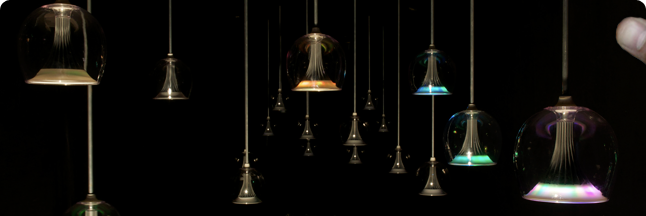An Interactive Installation
Chroma is an installation with moving lamps that respond to light, colour and movement. An interactive ecosystem searching for a balance that can be disturbed by the visitor. The smallest disturbance can have a great effect. You are not the only influence on Chroma. Its own components will also influence each other, resulting in an explosion of colour.
Chroma provides a platform for interactivity. The lamps invite you to freely explore, play and manipulate. As a visitor you determine how Chroma behaves: wild and unpredictable or calm and harmoniously. A natural balance will be found regardless of how Chroma is approached.
The Video

The Process
The following section showcases a rough outline of the design and construction phase, illustrating the various detailed steps necessary for completion.
Disassembly
Starting with 25 Philips Living Colors lights, the first thing to do was disassembly. This is a challenging feat, as these lights are notoriously hard to deconstruct.
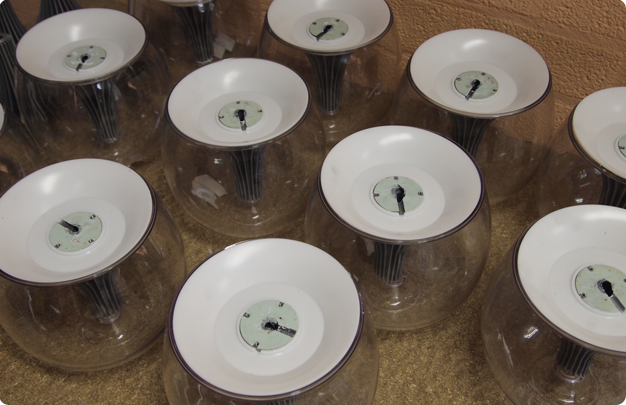
Molding and Casting Plastic and Rubber
The next step involved creating the new plastic support for the bar holding the lights. Using the existing shell as a mold, hard plastic casts were made. Upon extraction, this part is turned upside down to create a stronger bond with-and a more fluent line between bar and light.
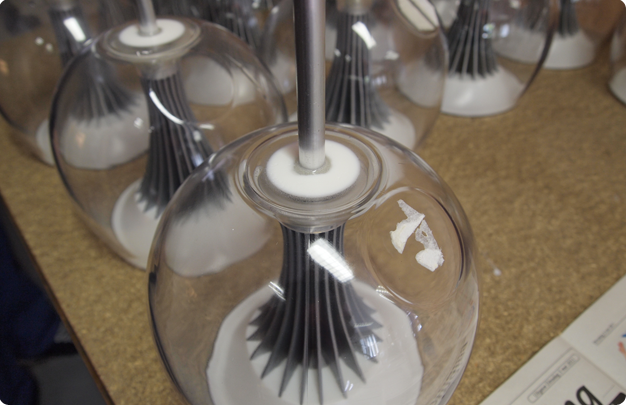
In order to make sure the lights would swing, a rubber part had to be constructed. The precise mechanics behind this part were designed, discussed, and tested thoroughly.
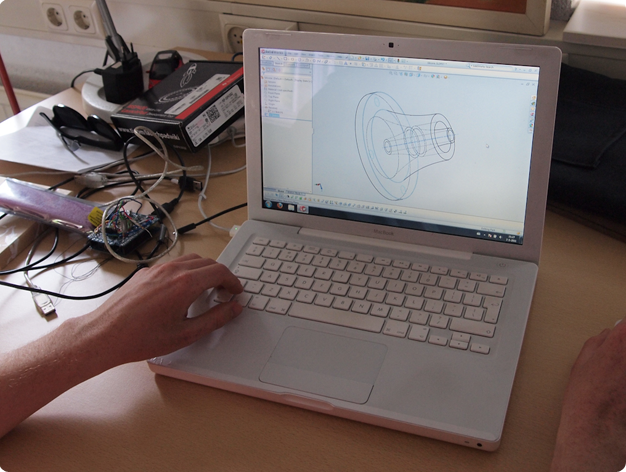
After designing the part, it was 3D printed. Using this print, a negative silicone mold was made. Finally, this mold was used to cast the final rubber part.
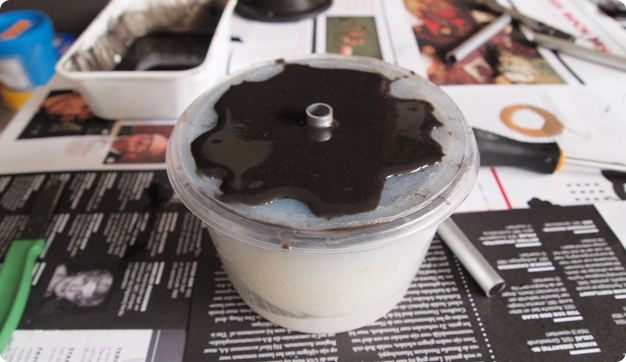
In being the element in charge of the light’s movement, it had to be constructed in such a way it would discourage people to swing too violently. The inertia of the motion becomes increasingly higher upon increasing the angle. Thus, extreme angles are avoided through inhibiting more resistance.
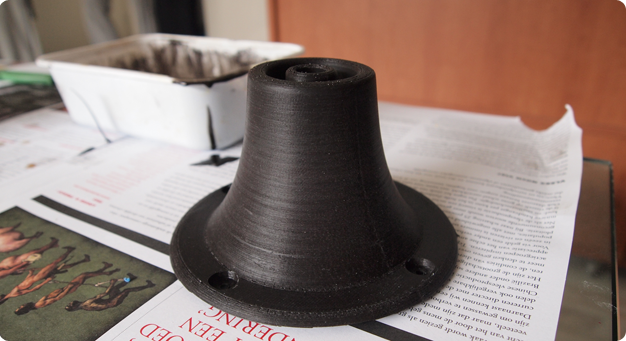
Electronics
In order to provide the lights with our own programmed behavior, adaptions had to be made to the existing circuit boards. These PCB’s housed four large LED’s and various chips controlling the reaction of these lights.
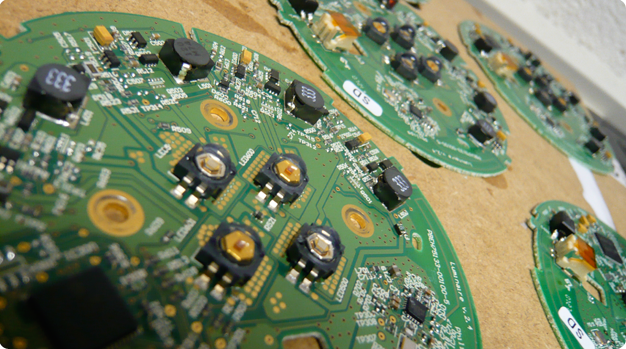
Custom circuit boards were designed to fit on top of the existing ones, sporting holes to allow the light to pass through. These boards would incorporate microchips with custom code and were attached to the stock PCB. Manufactured in China of course.
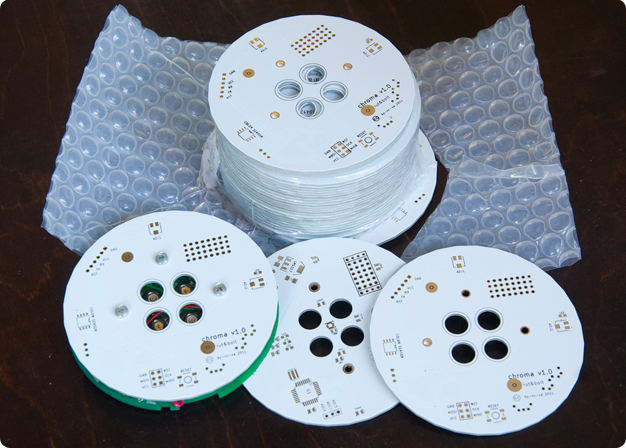
By using a cut-out template to provide solder to the precise locations, and placing the microchips on said locations, an old sandwich toaster could be used to melt the solder. This resulted in an automated process were little hand-soldering was needed.
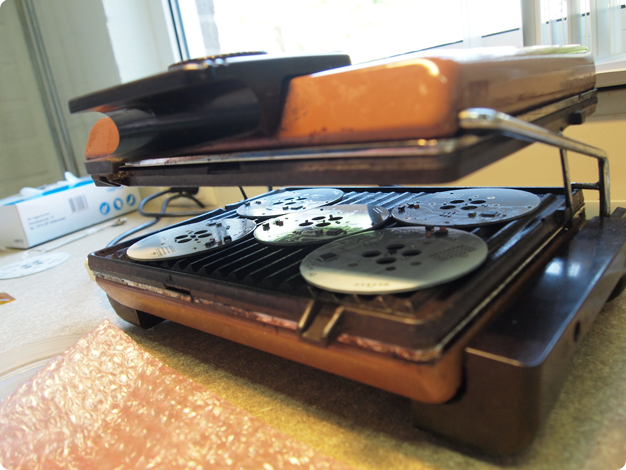
By adding custom headers and wires, the new circuit boards could be attached to the stock boards without difficulty, using screws and spacers to keep them in place.
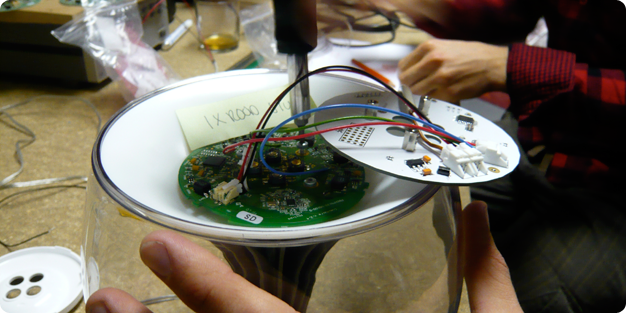
Programming
The entire behavior of the lamps was written in code. By testing the lights in a dark environment, the code was finalized. This took considerable time, since generating the best possible and fluent behavior of the lamps without a hitch is not an easy task.
Another piece of code was added to prevent even more unwanted behavior. Whenever a light is provided with a very fast acceleration, such as hitting another light, or being hit by a person, it switches off for two seconds. This is done to provide a warning signal to anyone interacting with the lights, making sure further aggressive behavior is negated.
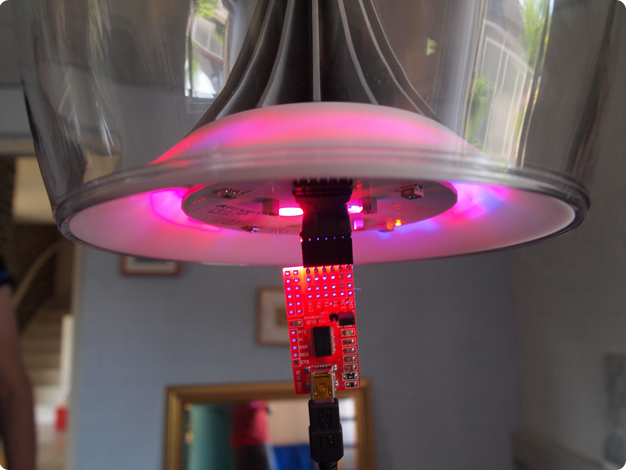
The final code was uploaded to all the assembled lights, making sure they all performed as desired.
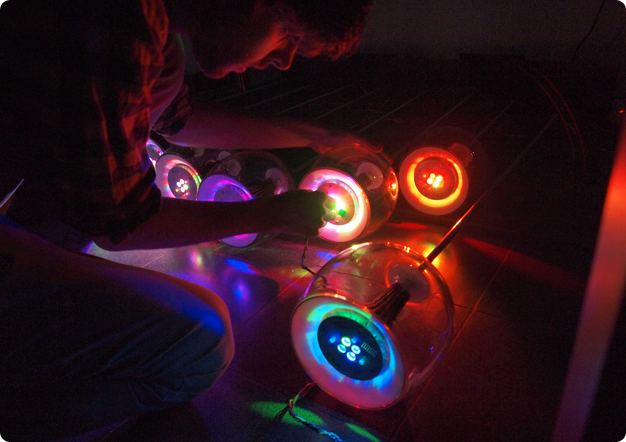
Final Construction
A large shipping container would provide the scenery and constructional element for the lights. A solid wooded construction was mounted inside the container to provide the roof for the lights. Also, the entire interior was covered in black cloth, to provide the best possible effect.
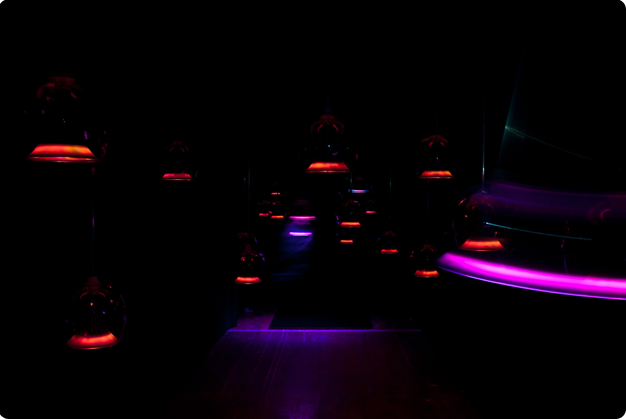
The Behavior
The final behavior of the lamps is as follows: each lamp is ware of its movement. When still, it shines a dim red light. Upon acceleration, it will begin emitting light. The color of this light is linked to the direction of the swing: each orientation spawns a different color. The brightness of this color is determined by the angle of the swing: the higher the angle, the brighter the light. This effect is best illustrated with a long exposure photo.
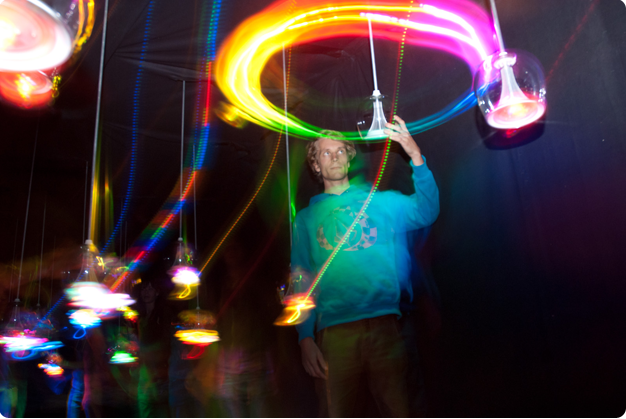
Finally, each light reacts to its environment. If a lamp is moved, its neighbors will notice the color and match it. This sends a small shockwave of color through the area each time a lamp is interacted with.
Logo and Business Cards
To keep things professional, a logo and set of business cards were designed. The “C” of the logo used the curvature of the Philips Living Colors lights, including a cyan, magenta, and yellow stripe in the shape of the cooling fins inside the lights.

The business card shows the logo and website-and contact information on the front on a black background, using the same CMYK colors. The back is styled in the endings of the cooling fins, which took a 3D model of said fins for the perfect curvature and angle, also in the matching colors.


Chroma Interactive
Chroma is the brainchild of the Chroma Interactive team: Guus Baggermans, Jasper Dekker, Brian Garret Schuur, David Menting and Jan van der Asdonk.
Stats
completed in: June, 2011
time spent on project: lots of hours, in the dark, in a small garage
stakeholders: Chroma Interactive and the Oddstream festival Nijmegen 2011
links: Chroma Interactive Facebook, blogged at the frog design mind blog, and at PICNIC.
exhibited at: the Oddstream Festival Nijmegen 2011 (2 – 5 June 2011) and at the Picnic Festival Amsterdam in support of the frog talk on Superprototyping (14 – 16 September 2011)
